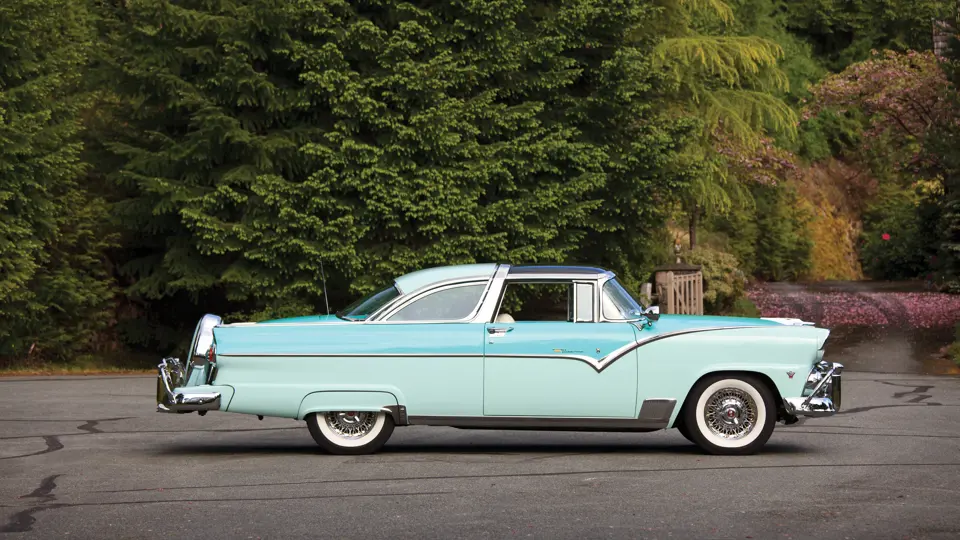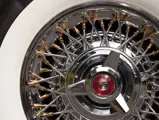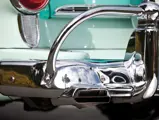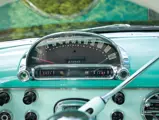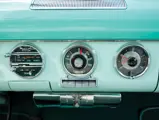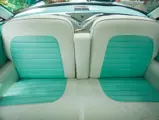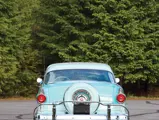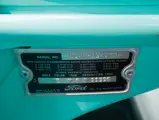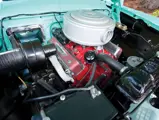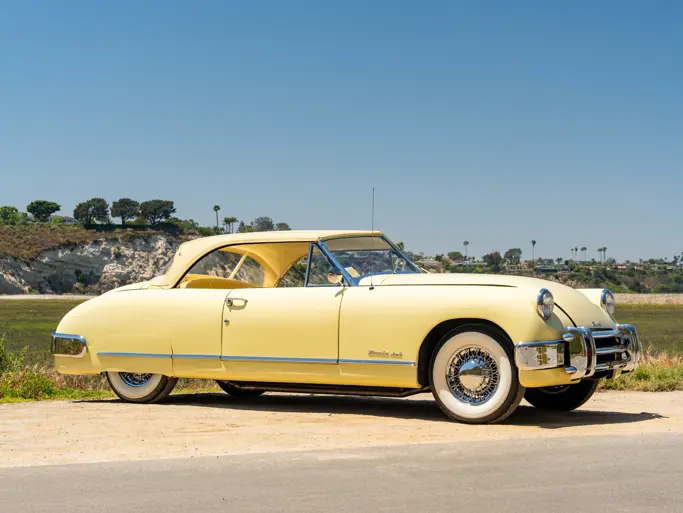245 hp, 312 cu. in. OHV V-8 engine, three-speed Ford-O-Matic transmission, coil-spring independent front suspension with added sway bar, live rear axle with semi-elliptic leaf spring suspension, and power-assisted front disc and rear drum brakes. Wheelbase: 115.5 in.
The Ford Motor Company introduced its novel Crestline Skyliner and Mercury Monterey Sun Valley (called the Monarch Lucerne in Canada) for the 1954 model year. Inspiration for the two-door hardtops came from the X-100 and X-500 show cars, which graced the cover of the company’s 1953 50th anniversary book, entitled Ford at Fifty. Both featured a tinted Plexiglas roof panel over the driver and front passenger to tone down light, heat, and glare. The intent was to help boost Ford’s image as a style leader. Ford first showed its version at the Rotunda in Dearborn, Michigan, in January 1954; two were given away to visitors submitting the best “Worth More” features of the new Ford car line.
Brochures called it, “Ford’s Newest . . . the Ultra-Modern Skyliner.” Ads called it the “glamour gal of the ’54 season.” In addition to an all-new “Y-block” 256 CID overhead valve V-8, Ford offered four-way power seats for the first time, along with power steering, brakes, and windows, and a Ford-O-Matic automatic transmission as options. Total Skyliner production for the model year was 13,444 units.
Both Ford and Mercury models received a handsome restyle for 1955, and both divisions moved their “bubbletops” up-market; Ford’s was now part of its new, top-of-the-line Fairlane Crown Victoria series. It featured a non-structural chrome roof band, or “basket handle,” which was considered gaudy at the time, but it is deeply desired by today’s collectors. Ford built 1,999, at a base cost of $2,177, with V-8 engines, which was significantly less than in its debut year.
According to the current owners, this car was manufactured at Ford’s Los Angeles factory, spending its early life in the city. It was brought to Vancouver Island, British Columbia, in the early 1980s, and it was kept dry in storage until 2004, when they purchased the car. Interestingly, this car was not born with a glass roof panel; though, the modification had been done prior to the current owners taking possession. At the time of restoration, the Plexiglas roof panel was replaced.
The existing V-8 was rebuilt into a 312 CID unit, including the correct crank, rods, and heads, which were all to 1957 standards. A new Holley four-barrel carburetor was fitted, the power steering was rebuilt, and front disc brakes were installed, along with a modern power booster and master cylinder. The electrics have been upgraded to a 12-volt system.
Prior to the extensive restoration, the body was taken off the frame, “and no expense was spared to make it perfect,” says the owner. Painted a factory-correct combination of Sea Sprite and Skyhaze, no detail has been overlooked, including new glass, rubber gaskets, and seals; all of the chrome was re-done, and the brightwork was polished. A modern AM/FM/CD player is hidden within an under-dash tissue dispenser, and a power seat has been installed; both were added to aid in driving comfort.
A comprehensive list of upgrades, modifications, and detailed work performed on this iconic 1950s motor car is available upon request. Fans of 1950s Fords, take notice.

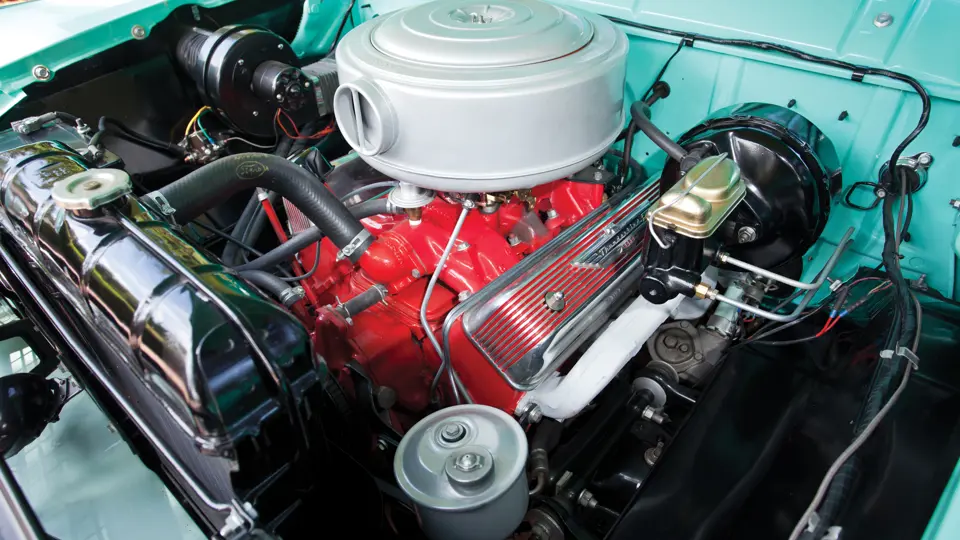



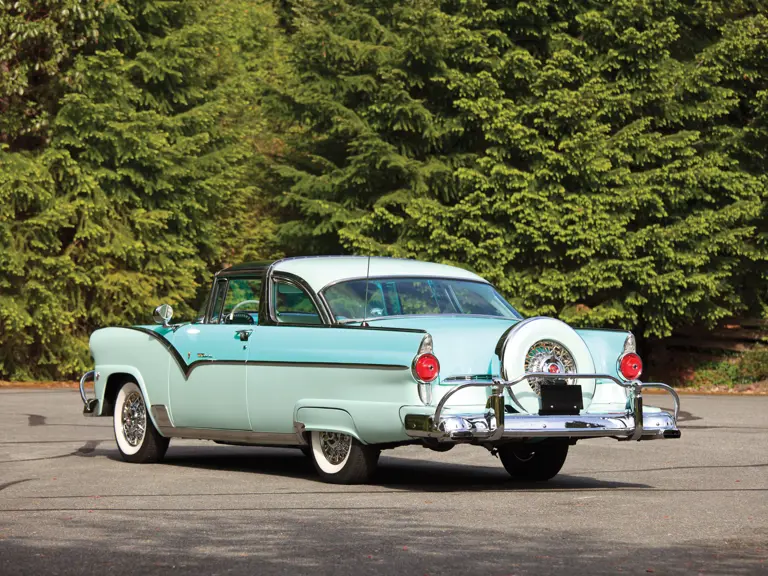
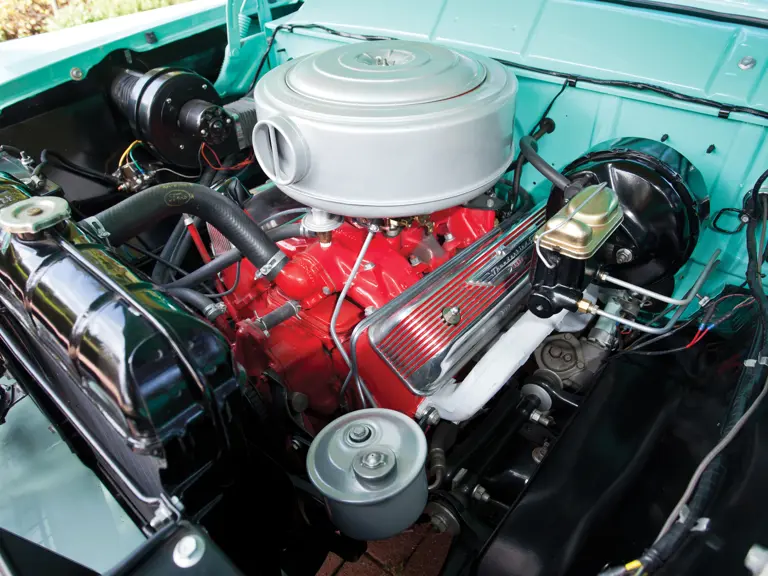
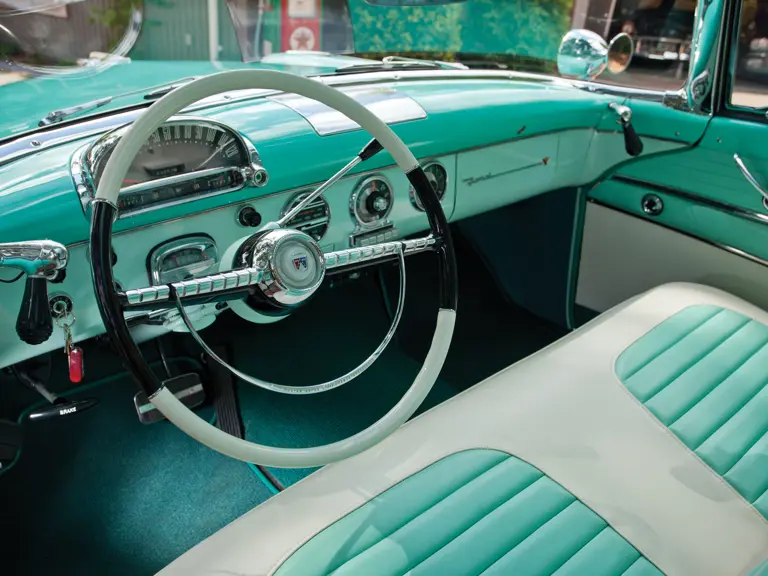

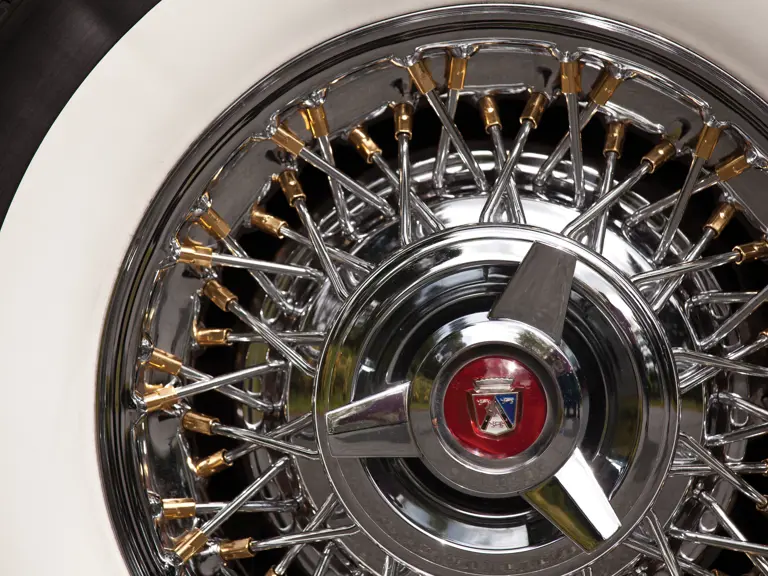
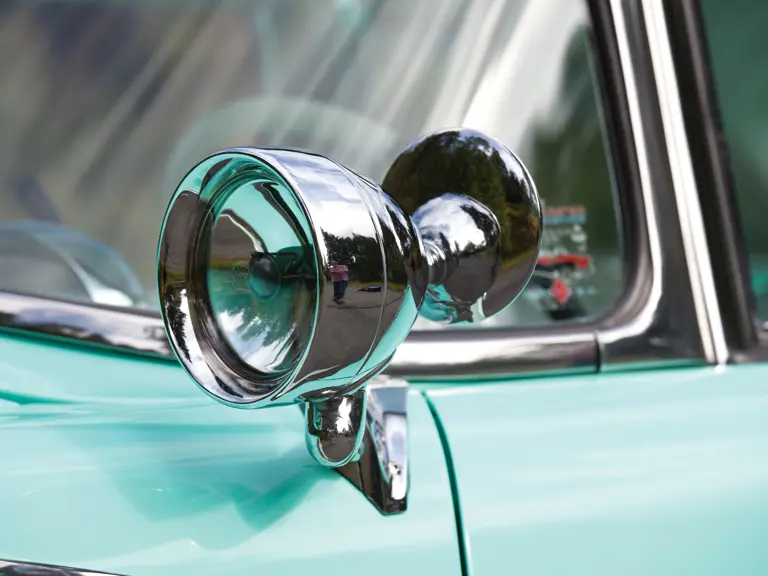
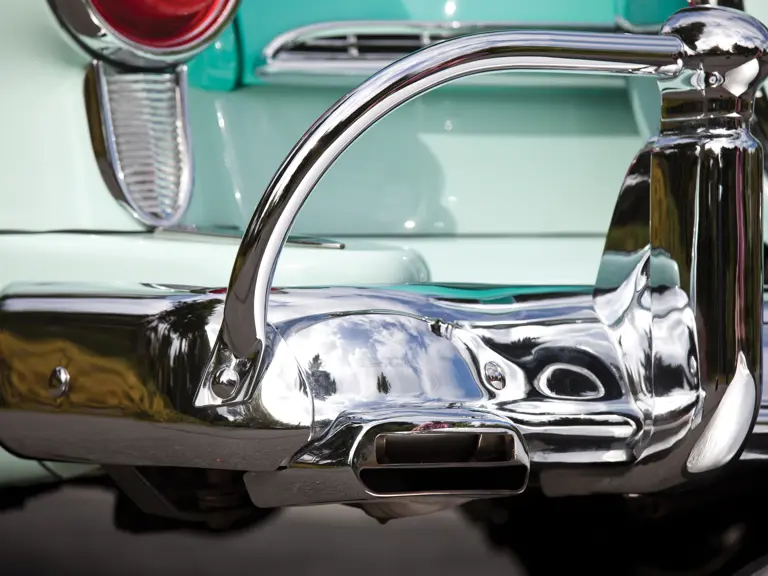
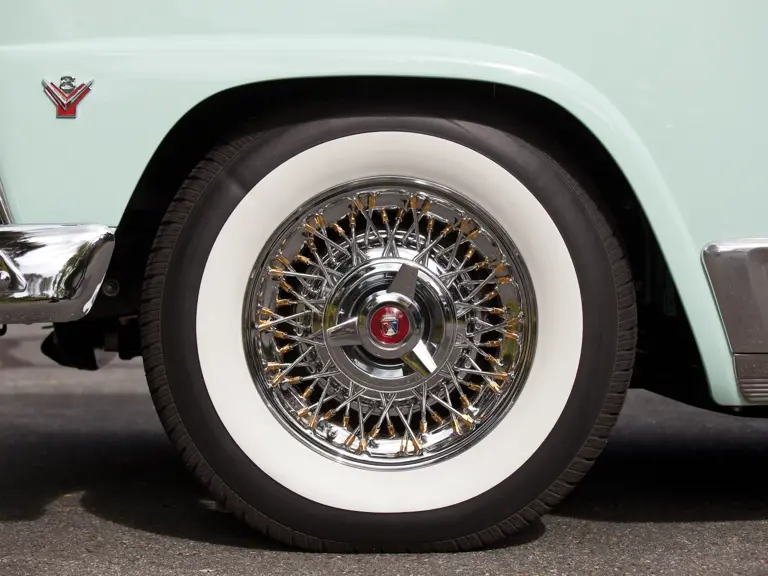

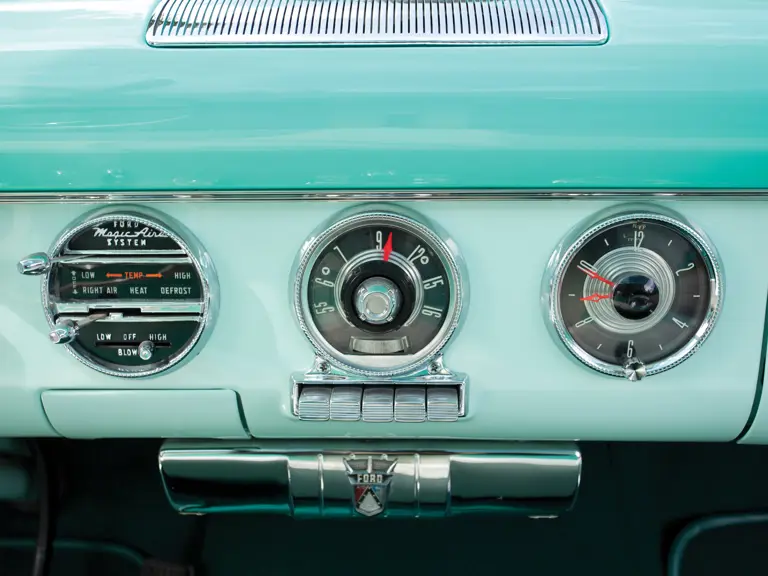


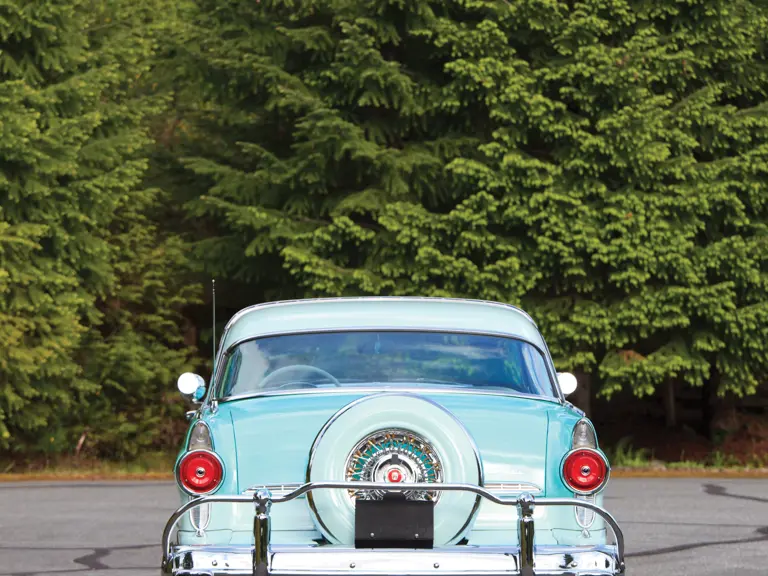
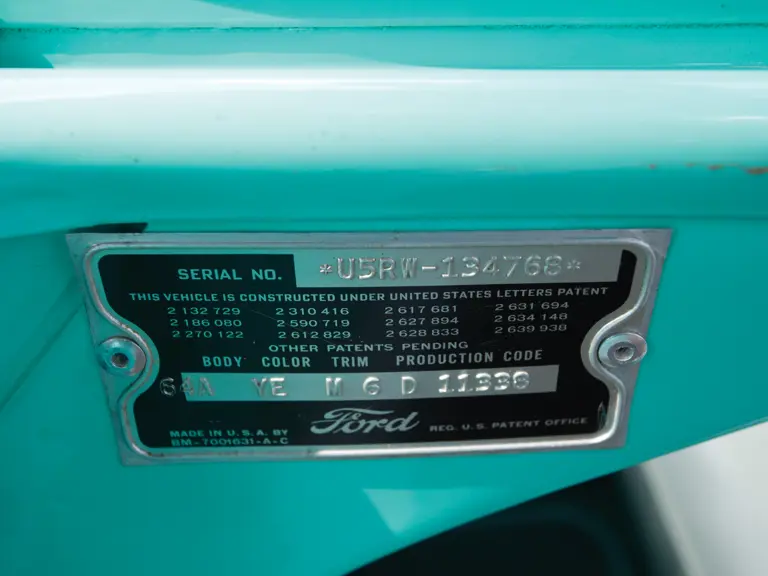
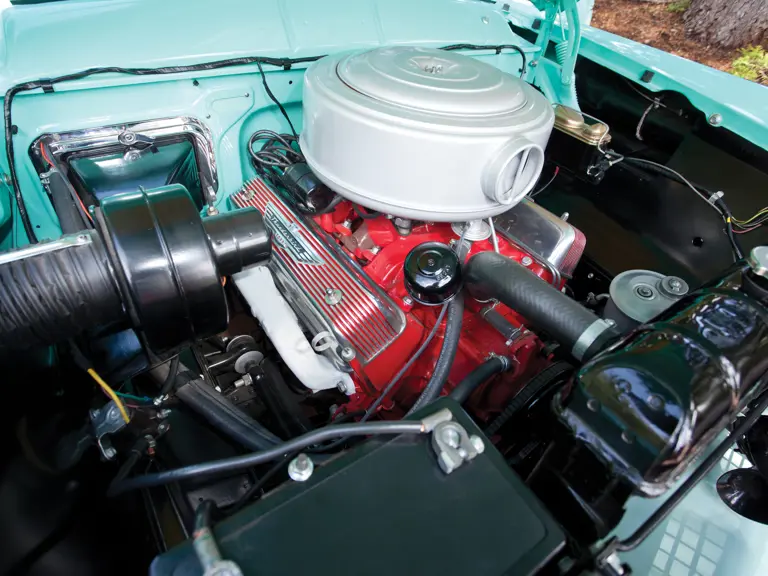

 | Plymouth, Michigan
| Plymouth, Michigan
